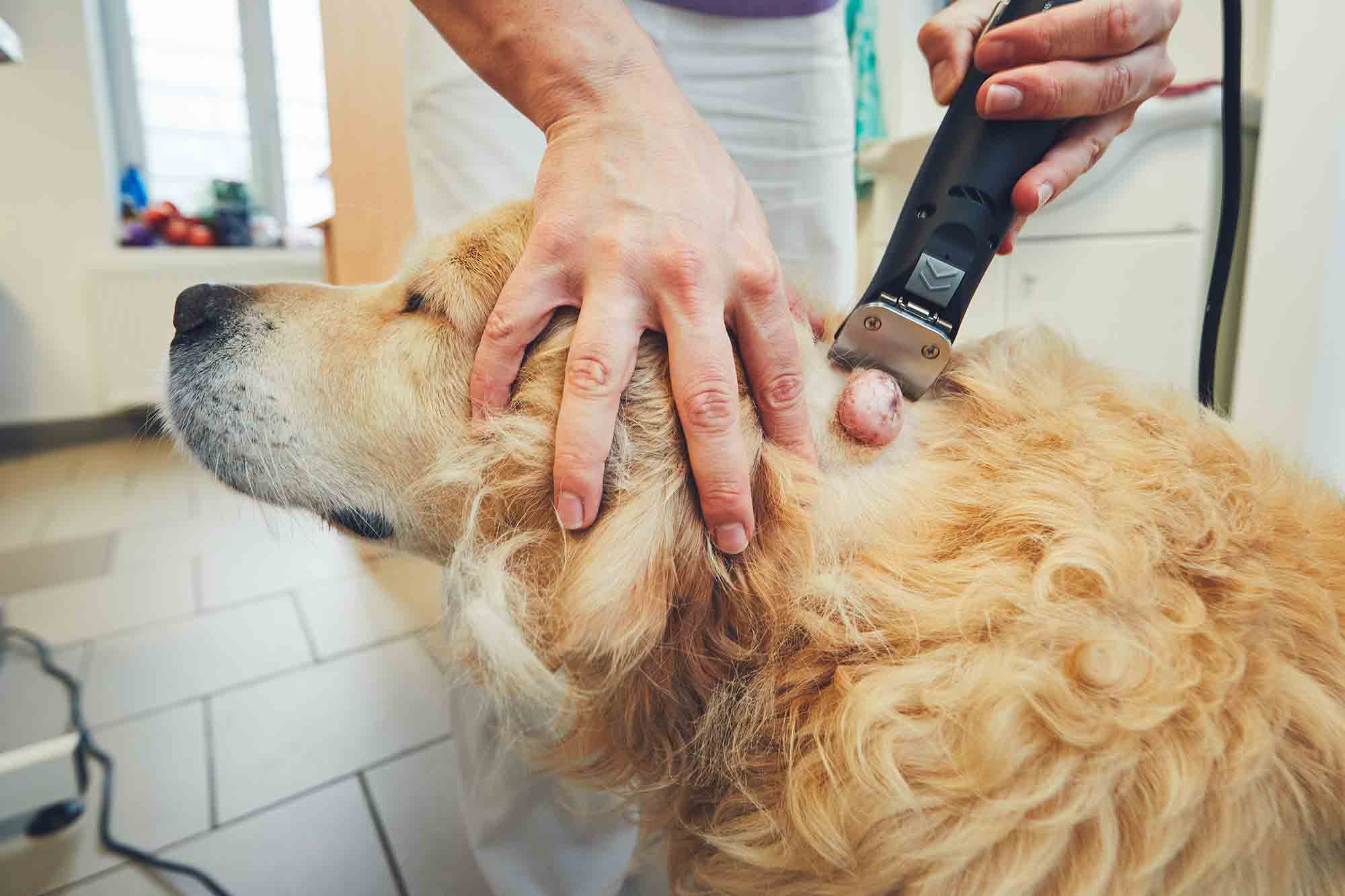

Any time a new lump or bump arises on a pet, it is cause for concern. Not only are they unattractive, they can also be bothersome for the pet. Some may even be cancerous.
The cornerstone of treatment for many types of growths on pets is surgical removal. Depending on the size and location of the lesion, this can be an involved and costly endeavor. Pets in Stitches is here for you when it comes to understanding these growths and mass removals.
Lumpy Bumps
Most pets will develop a lump or a bump during their lifespan. Many of these are a growth of some sort, but infections (abscesses) or a reaction to something (granulomas) are also possibilities.
Growths may be:
Benign – This type of growth is not cancerous and generally is harmless. These may include skin tags, warts, cysts, or fatty tumors (lipomas). They are unlikely to cause major issues in and of themselves. However, some of these benign tumors may be quickly growing, irritating, or in a location that interferes with normal functioning.
Malignant – Malignant growths are what we typically think of when we think of cancer. They are often fast-growing and infiltrate and destroy nearby tissues. They are also prone to spreading throughout the body.
We are not always able to know if a growth is benign or malignant prior to biopsy of the abnormal tissue. It is sometimes hard to know when to worry about a lump. Any growth that is growing, changing, or irritating is typically recommended to be removed and biopsied to determine prognosis and need for further therapy.
Pet Mass Removals
In people, a mass may first be surgically biopsied to determine what it is, then surgically removed utilizing the information from the biopsy procedure. In pets, this is typically not done, mostly due to cost. It tends to be more practical to remove the entire area of concern for biopsy, often eliminating the need for a second surgical procedure.
Pet mass removals are performed under general anesthesia. This allows us to remove the entire area in question effectively and painlessly.
Typically, we will do our best to obtain margins clear of abnormal tissue Margins are borders of normal tissue surrounding the abnormal area. By doing this, we lessen the chance that we are leaving abnormal cells behind.
Sometimes, due to the location or nature of the mass, it is difficult or impossible to get adequate margins. If abnormal cells are left (usually these are not visible to the naked eye) and the growth is found to be cancerous, other treatments or additional surgeries may be recommended. This is why biopsy, also called histopathology, at the laboratory is so important. It can tell us:
- What type of tumor we removed
- If we removed all of it
- If it is likely to return
- If it is likely to have spread into the bloodstream
- What other treatments might be beneficial
- Whether it is likely to affect the pet’s lifespan
When the tumor is removed, the area is closed using sutures or staples. Occasionally, if a tumor is quite large or in an area with very little extra tissue, techniques like skin grafting or open wound healing may need to used.
After surgery, it is very important that your pet leave the incision area alone and that you limit activity as instructed. This allows the surgery site time to heal. Sometimes tools, such as an Elizabethan (cone) collar, may be recommended or required.
Pet mass removals can be an important part of keeping your family friend healthy, active, and happy. We are proud to be able to offer this service at a cost-effective rate. Please call us today if you would like more information about mass removal for your pet.
